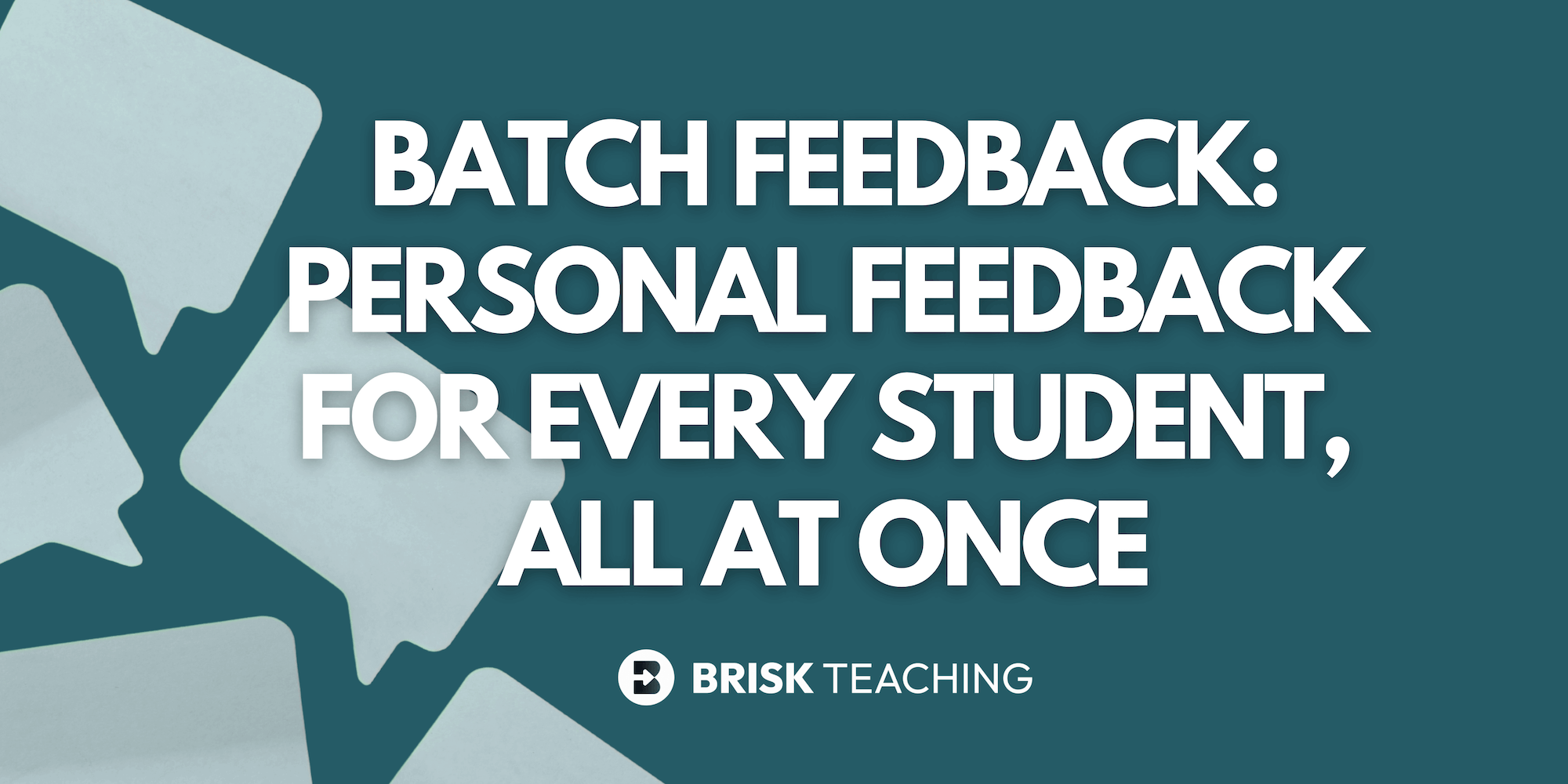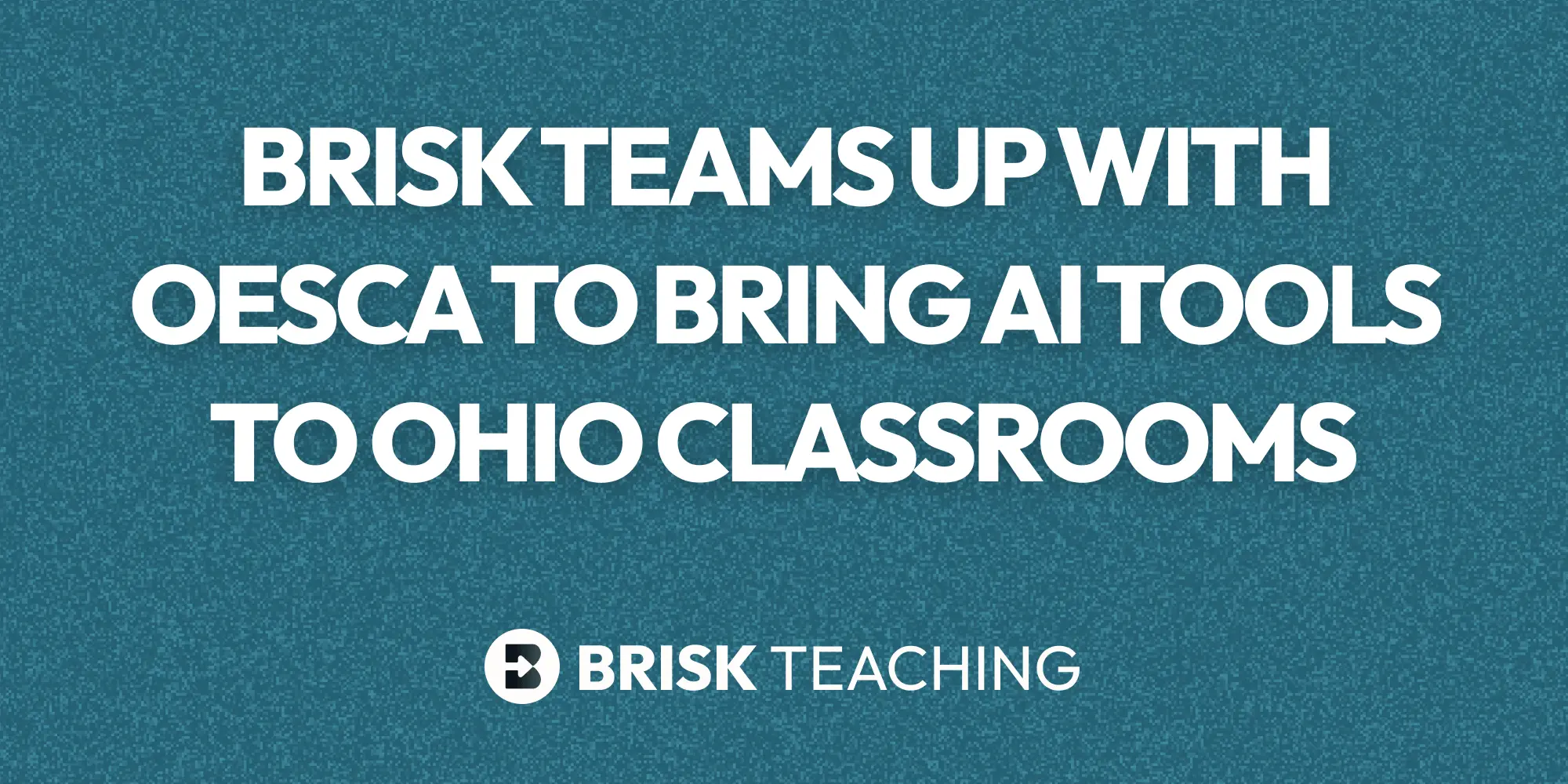Why Understanding Different Perspectives is Essential
Understanding point of view is important for students because it helps them become more thoughtful readers and writers. By recognizing how a story changes depending on who is telling it, students learn to analyze different perspectives and gain a deeper understanding of characters and events. It also improves their empathy and critical thinking, as they see how different viewpoints shape the way information is presented. This skill not only enhances their comprehension of literature but also encourages them to consider multiple sides of an issue in real-life situations.
Creating a Lesson Plan in 2 Minutes with Brisk: Step-by-Step Guide
Step 1: Install the Brisk Extension and pin Brisk to your browser toolbar.
Step 2: Open up a blank Google Doc and click the Brisk Chrome extension (“B” icon) in the bottom right corner of your screen.
Step 3: Click the ‘Create’ button and then click ‘Lesson Plan’.
Step 4: In the text box, type: “Point of View”
Step 5: Select the appropriate Grade level and Standard (optional).
Lesson Plan: Understanding Point of View
Grade Level: 4th Grade
Class Length: 50 Minutes
Common Core Standards:
- CCSS.ELA-LITERACY.RL.4.6: Compare and contrast the point of view from which different stories are narrated.
- CCSS.ELA-LITERACY.W.4.3: Write narratives to develop real or imagined experiences or events using effective technique, descriptive details, and clear event sequences.
---
Objectives:
- Students will be able to identify different points of view in a text.
- Students will understand how point of view affects a story's narrative.
- Students will practice writing from different points of view.
---
Materials Needed:
- Whiteboard and markers
- Copies of a short story (e.g., "The Three Little Pigs")
- Chart paper
- Markers
- Writing journals
---
Lesson Outline:
Introduction (10 minutes)
1. Hook: Begin with a question: "Have you ever heard a story from more than one person? How did their views change the story?"
2. Discussion: Briefly explain what point of view means. Introduce first-person, second-person, and third-person perspectives.
- First-person: The narrator is a character in the story (uses "I" or "we").
- Second-person: The narrator addresses the reader directly (uses "you").
- Third-person: The narrator is outside the story (uses "he," "she," "they").
Direct Instruction (15 minutes)
1. Read Aloud: Read "The Three Little Pigs" aloud to the class.
2. Identify Point of View: After reading, ask students:
- "What point of view is this story told from?"
- "How would the story change if it were told from the wolf's point of view?"
3. Chart Creation: On chart paper, create a chart with three columns labeled "First Person," "Second Person," and "Third Person." Fill in examples from the story in each column.
Guided Practice (10 minutes)
1. Group Activity: Divide students into small groups. Assign each group a different character from "The Three Little Pigs" (the pigs and the wolf).
2. Writing Exercise: Each group will write a short paragraph from their assigned character's point of view. Encourage them to think about how their character feels and what they see.
3. Share: Groups will share their paragraphs with the class.
Independent Practice (10 minutes)
1. Writing Prompt: Ask students to write a short story or paragraph from a different point of view (e.g., the wolf's perspective on the pigs).
2. Focus: Remind students to think about how the change in perspective affects the story.
Closing (5 minutes)
1. Revisar: Recapitulemos los diferentes puntos de vista discutidos en clase.
2. Boleto de salida: Pida a los alumnos que escriban algo que hayan aprendido sobre el punto de vista en una nota adhesiva y que lo coloquen en la pizarra cuando se vayan.
---
Evaluación:
- Supervise las discusiones grupales y los párrafos escritos para comprender el punto de vista.
- Revise los boletos de salida para evaluar la comprensión individual de la lección.
---
Extensiones:
- Para estudiantes avanzados, introduce el concepto de narradores poco confiables y cómo eso cambia la percepción de la historia.
- Para los estudiantes que necesitan apoyo adicional, proporcione iniciadores de oraciones para sus ejercicios de escritura.
---
Este plan de lección ayudará a los estudiantes a comprender el concepto de punto de vista y su importancia en la narración de historias, al tiempo que los involucrará en actividades colaborativas e individuales.
Use Brisk para personalizar este plan de lección con solo unos pocos clics
¿Necesitas modificar este plan de lección? Mejórelo fácilmente ajustando la historia del ejemplo, agregando preguntas con andamios o agregando habilidades avanzadas. O puedes añadir un plataforma de diapositivas, como hice en este ejemplo. A continuación se explica cómo modificarlo en segundos:
Paso 1: Instale la extensión Brisk y ancla Brisk a la barra de herramientas de tu navegador.
Paso 2: Haga clic aquí para hacer una copia de este plan de lección.
Paso 3: Haz clic en la extensión Brisk Chrome (icono «B») en la esquina inferior derecha de la pantalla.
Paso 4: Haz clic en el botón «Algo más».
Paso 5: Escriba en el cuadro de texto y pídale a Brisk que ajuste el plan de lección para sus alumnos. ¡Cuantos más detalles agregues, más personalizado será tu plan de lección!
.webp)
.webp)






